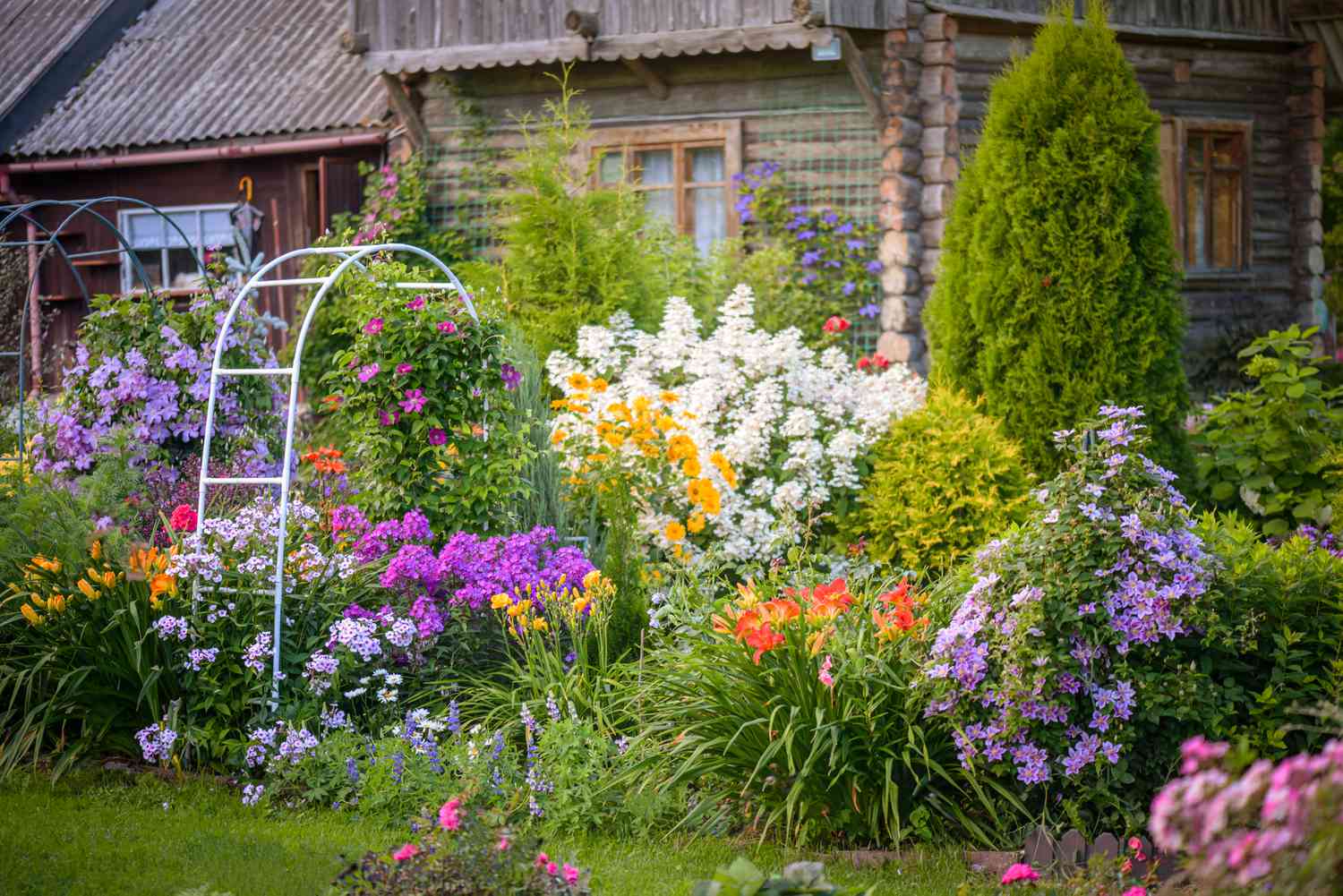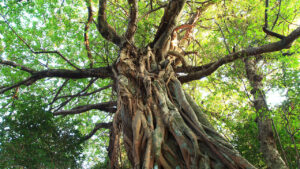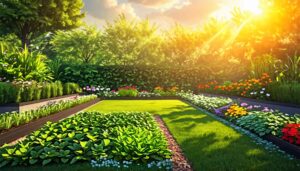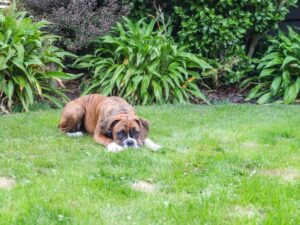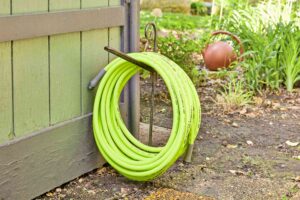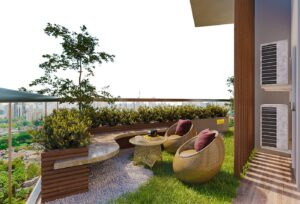Creating a Backyard Wildflower Garden: Design Ideas for Natural Beauty
Transform your ordinary backyard into an extraordinary haven of color, movement, and life with a wildflower garden that celebrates native beauty while requiring minimal maintenance. Whether you have a sprawling yard or just a small corner to dedicate to wildflowers, creating this natural ecosystem brings multiple rewards: stunning visual interest throughout the growing season, critical habitat for pollinators, and a deeper connection to your local environment. This guide will walk you through the essential steps to design, plant, and maintain a thriving backyard wildflower garden that enhances your outdoor space while supporting local biodiversity.
Why Create a Backyard Wildflower Garden?
Before diving into the practical aspects of wildflower garden design, let’s explore why it’s worth transforming part of your yard into this natural ecosystem:
- Ecological Benefits: Wildflower gardens provide critical food sources and habitat for bees, butterflies, birds, and beneficial insects that help control garden pests naturally.
- Low Maintenance: Once established, wildflower gardens require significantly less water, fertilizer, and time than conventional landscapes.
- Year-Round Interest: From early spring bloomers to late fall seed heads with winter architectural elements, wildflower gardens offer changing beauty with each season.
- Cost Effectiveness: Converting lawn areas to wildflower gardens reduces mowing, watering, and chemical inputs, saving both money and resources over time.
- Personal Well-Being: Numerous studies show that natural landscapes improve mental health and provide restorative benefits through connection with nature.
Outdoor Wildflower Garden Ideas: Design Approaches for Every Space
The most successful wildflower gardens begin with thoughtful design that considers both aesthetic wishes and ecological function. Here are some design approaches to consider for your backyard:
1. Naturalistic Meadow Garden
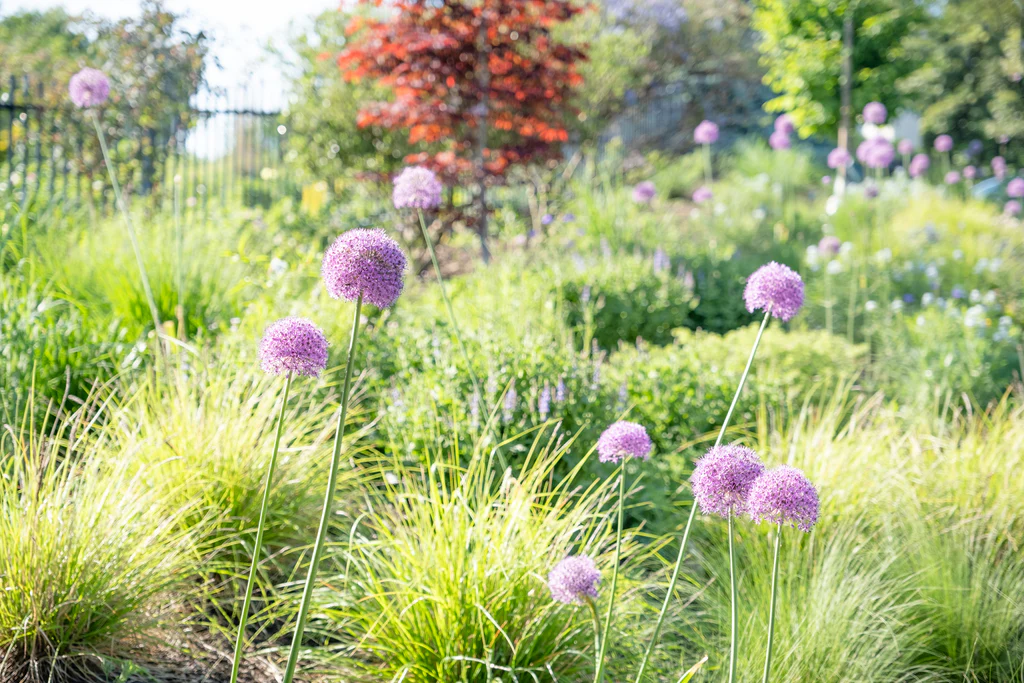
This style mimics the random beauty of naturally occurring wildflower meadows, creating a seemingly effortless landscape that evolves with the seasons.
Key Features:
- Informal, flowing boundaries that blend with surrounding landscape
- Mixed heights and textures that create a layered effect
- Strategic inclusion of native grasses (30-40%) for structure and winter interest
- Meandering paths that invite exploration
- Mass plantings of signature species for visual impact
Best For: Larger spaces (200+ square feet), areas away from formal garden features, privacy screening, or creating habitat corridors.
2. Structured Wildflower Borders
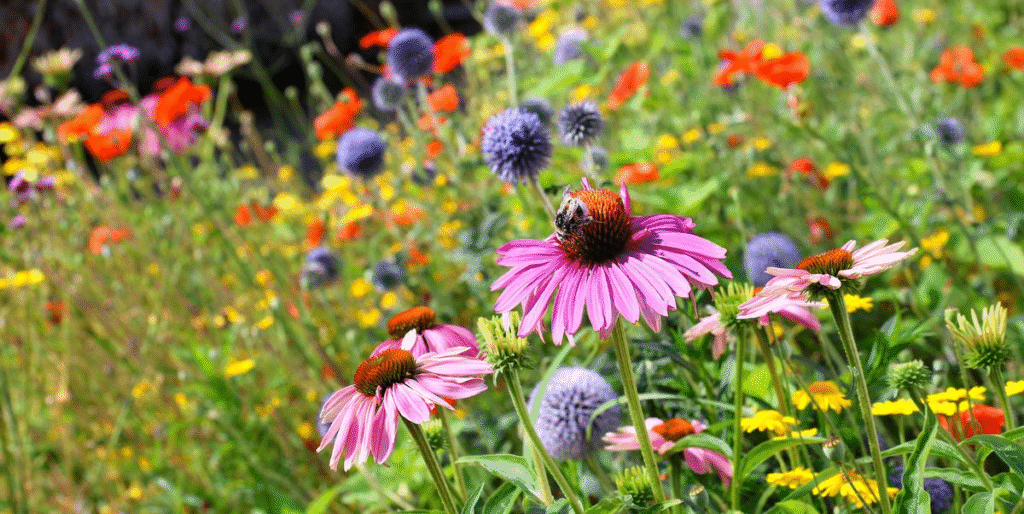
For those who prefer a more controlled aesthetic or need to integrate wildflowers with existing landscape elements, structured borders provide a perfect compromise.
Key Features:
- Defined edges using decorative fencing, stone borders, or neatly trimmed grass paths
- Organized height progression (tallest in back or center)
- Intentional color themes that complement your home’s exterior
- Focal points like bird baths, decorative boulders, or ornamental grasses
- Strategic repeat plantings for visual rhythm
Best For: Front yards, areas visible from windows, transitions between formal and informal garden spaces, or smaller gardens where organization helps maximize impact.
3. Wildflower Garden Rooms
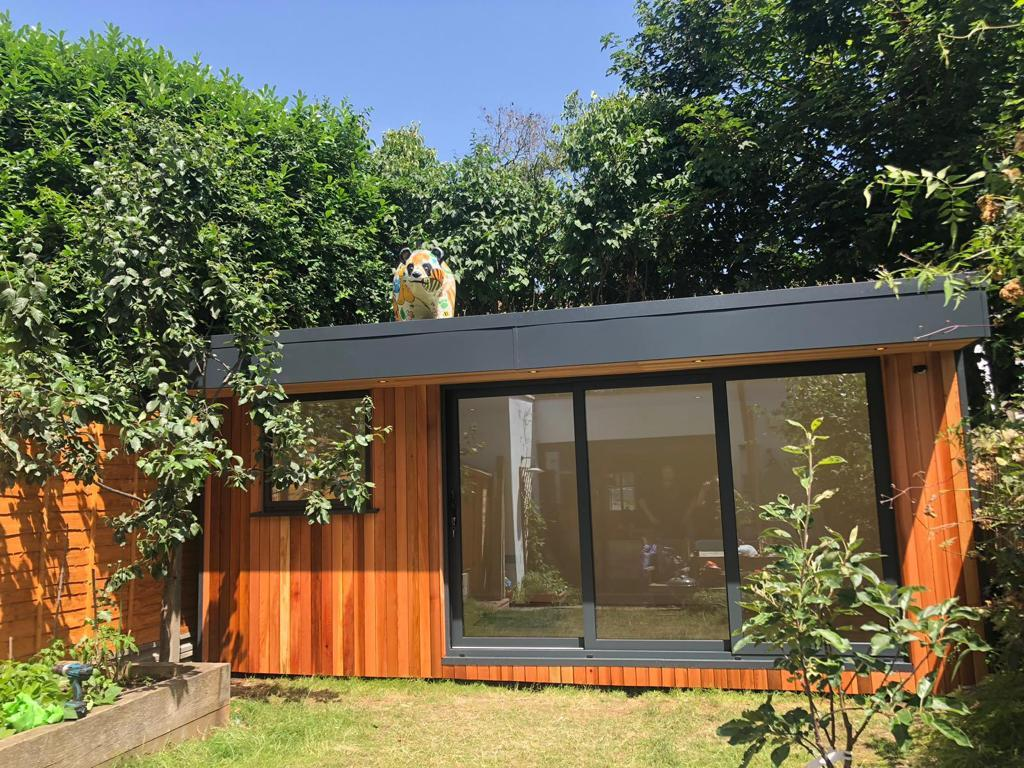
Create intimate wildflower garden “rooms” connected by paths or separated by structural elements for a journey through changing plant communities.
Key Features:
- Distinct areas defined by plant height, bloom time, or color scheme
- Connecting elements like arbors, pergolas, or stone paths
- Seating areas positioned for optimal viewing
- Sensory considerations (fragrant plants near seating, rustling grasses for sound)
- Design that encourages lingering and observation
Best For: Medium to large yards, educational gardens, multi-season interest, or creating distinct experiences within one landscape.
4. Wildflower Container Gardens
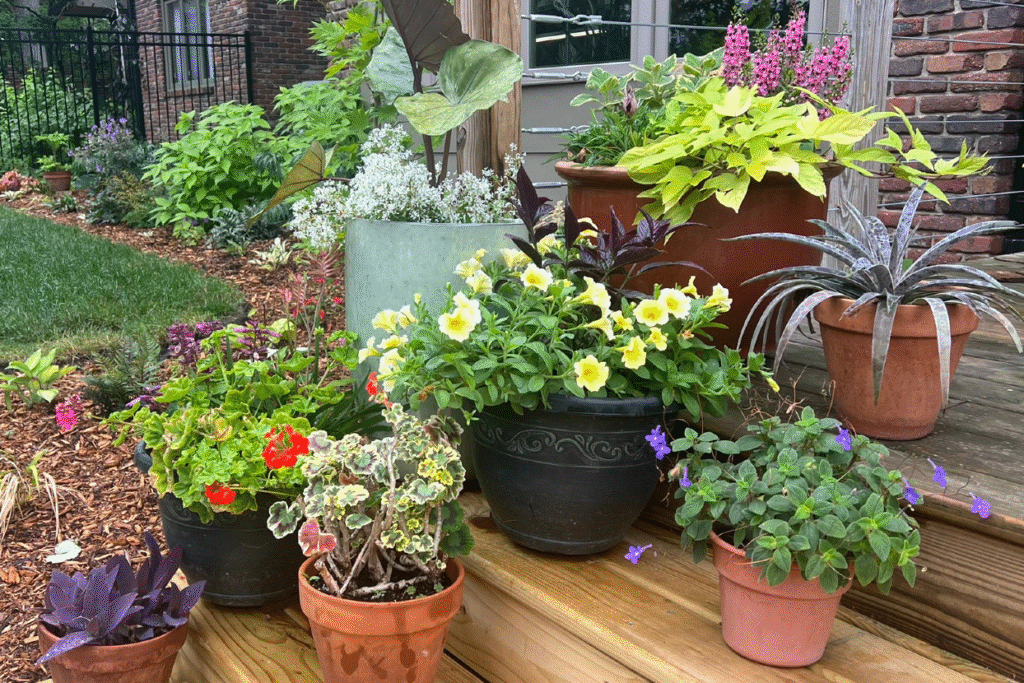
Even without ample yard space, you can enjoy the beauty of wildflowers in container groupings on patios, balconies, or along driveways.
Key Features:
- Various container heights and sizes creating visual interest
- Careful species selection for appropriate root space
- Focus on compact wildflower varieties
- Clustering of containers for greater visual impact
- Consideration of viewing angles from indoor spaces
Best For: Urban environments, rentals, limited space, accessibility concerns, or as a starting point before committing to larger garden areas.
Pictures of Wildflower Gardens: Inspiration for Your Design
While each wildflower garden should reflect its regional identity and personal style, these inspirational examples demonstrate successful design principles in action:
The Layered Look
The most visually striking wildflower gardens incorporate plants of varying heights, with shorter species at the edges and taller varieties creating a backdrop. This approach mimics natural plant communities and creates depth in your garden.
Design Elements to Notice:
- Low-growing plants (4-12 inches) at borders and path edges
- Medium-height plants (1-3 feet) forming the bulk of the planting
- Taller statement plants (3-6 feet) as structural elements or focal points
- Visual “pockets” that allow the eye to travel through the landscape
Color Choreography
While wildflower gardens embrace natural diversity, thoughtful color planning enhances their visual impact throughout the growing season.
Successful Approaches:
- Complementary color schemes (purple coneflowers with yellow black-eyed Susans)
- Monochromatic plantings that showcase subtle variations in shade and texture
- Seasonal color progression ensuring visual interest spans multiple months
- Attention to foliage color and texture beyond bloom periods
Sustainable Water Features
Incorporating water elements enhances wildflower gardens by supporting additional wildlife and creating focal points.
Integration Ideas:
- Shallow bird baths placed amidst medium-height flowers
- Rain gardens in natural depressions collecting runoff
- Small pond areas with appropriate marginal plants
- Dry stream beds that direct water during rain events while providing visual interest during dry periods
Path and Access Planning
Thoughtful path design invites interaction with the wildflower garden while protecting plants from foot traffic.
Effective Strategies:
- Meandering rather than straight paths to encourage exploration
- Stepping stones through smaller areas to minimize soil compaction
- Mowed grass paths through larger meadow areas
- Natural materials that complement the informal aesthetic (wood chips, flagstone, or decomposed granite)
Wildflower Garden Ideas for Home: Customizing for Your Landscape

To create a wildflower garden that truly belongs in your unique backyard setting, consider these approaches to personalize your design:
Complementing Architectural Styles
Your home’s architectural character should inform your wildflower garden design for a cohesive landscape.
Contemporary Homes:
- Geometric wildflower beds with clean edges
- Bold masses of signature species
- Architectural plant selections with strong forms
- Strategic negative space emphasizing key plant groupings
Traditional Homes:
- Softer edges blending with traditional landscape elements
- Integration with existing foundation plantings
- Classic wildflower selections that reference cottage gardens
- Framed views from key windows and outdoor living spaces
Rural/Farmhouse Settings:
- Larger-scale meadow plantings that transition to natural areas
- Integration of utilitarian elements (split rail fencing, historic implements)
- Broader sweeps of signature plants visible from a distance
- Consideration of agricultural history in plant selection
Addressing Site Challenges
Every yard has specific conditions that can be addressed through thoughtful wildflower garden design.
Sloped Areas:
- Terraced wildflower plantings to prevent erosion
- Strategic placement of deep-rooted species to stabilize soil
- Step-stone paths following contours for access
- Consideration of water flow patterns in plant placement
Shady Backyards:
- Woodland wildflower selections adapted to partial shade
- Early spring bloomers that flower before tree canopy leafs out
- Integration of ferns and native sedges for texture
- Emphasis on foliage patterns and textures for year-round interest
Hot, Dry Exposures:
- Drought-tolerant prairie and meadow species
- Incorporation of ornamental grasses for structure
- Attention to mulching during establishment phase
- Wider spacing to accommodate mature plant size in harsh conditions
Integrating with Existing Landscape Features
Most backyard wildflower gardens need to work harmoniously with existing elements:
Adjacent to Vegetable Gardens:
- Beneficial insect-attracting species that support crop pollination
- Defined boundaries preventing wildflower encroachment
- Complementary height progressions that preserve sun exposure
- Four-season interest visible from common garden work areas
Near Patios and Outdoor Living Spaces:
- Fragrant species positioned for evening enjoyment
- Lower heights in immediate vicinity to preserve views
- Special attention to plants that attract butterflies and hummingbirds
- Selection of species with extended bloom periods for maximum enjoyment
Around Trees and Shrubs:
- Woodland edge species that thrive in dappled light
- Consideration of root competition in plant selection
- Seasonal progression complementing woody plant features
- Visual connections through repeated colors or textures
Wildflower Gardens for Beginners: Starting Small for Big Impact
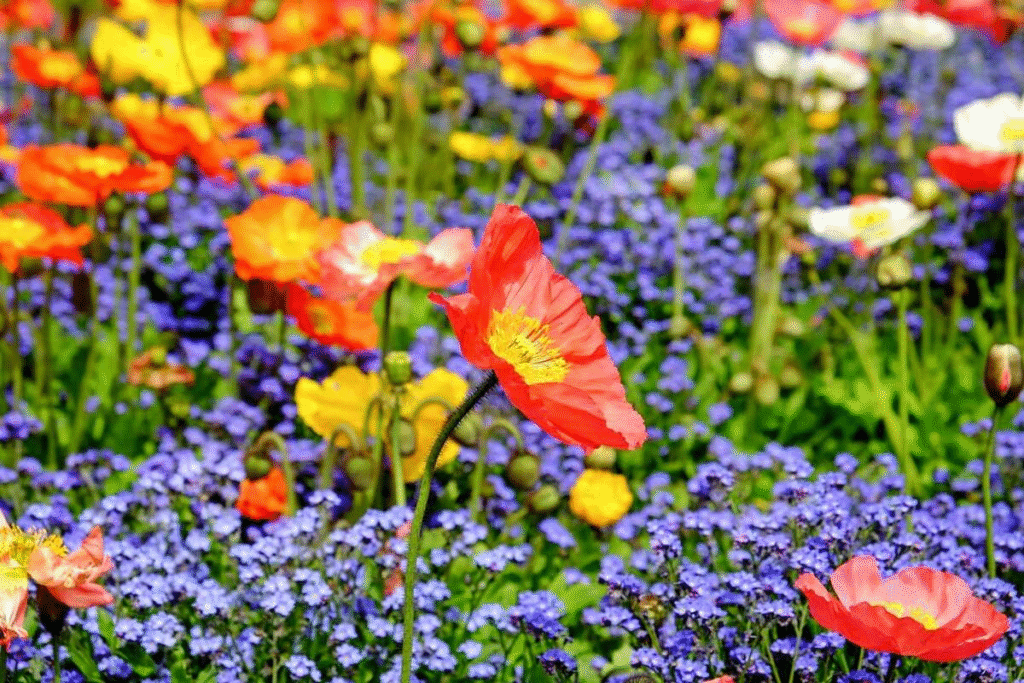
If you’re new to gardening or want to test the wildflower approach before committing to a larger project, these beginner-friendly strategies will set you up for success:
The Wildflower Garden Starter Patch
Begin with a modest 4×8 foot area to develop your skills and confidence with wildflowers.
Implementation Steps:
- Choose a sunny location visible from your frequent outdoor spaces
- Remove existing vegetation thoroughly using sheet mulching or solarization
- Select 5-7 reliable native wildflower species known to perform well locally
- Include at least one spring, summer, and fall bloomer for extended interest
- Plant in small clusters of 3-5 plants per species rather than individual specimens
- Mulch well with leaf compost or fine wood chips to suppress weeds
- Water consistently during the first growing season until established
Wildflower Conversion Timeline
Understanding the typical development pattern of wildflower gardens helps manage expectations:
First Season (Year One):
- Focus on weed suppression and establishment
- Expect limited flowering from annuals and some early-blooming perennials
- Document emerging plant patterns and identification
- Supplement with container plantings for immediate color if desired
Second Season:
- Many perennials begin flowering
- Garden structure becomes more visible
- Evaluate spacing and make adjustments
- Begin reducing supplemental watering for most species
Third Season and Beyond:
- Garden reaches visual maturity
- Self-seeding begins creating natural patterns
- Maintenance shifts to occasional interventions rather than regular care
- Begin introducing additional species for greater diversity
Beginner-Friendly Wildflower Species
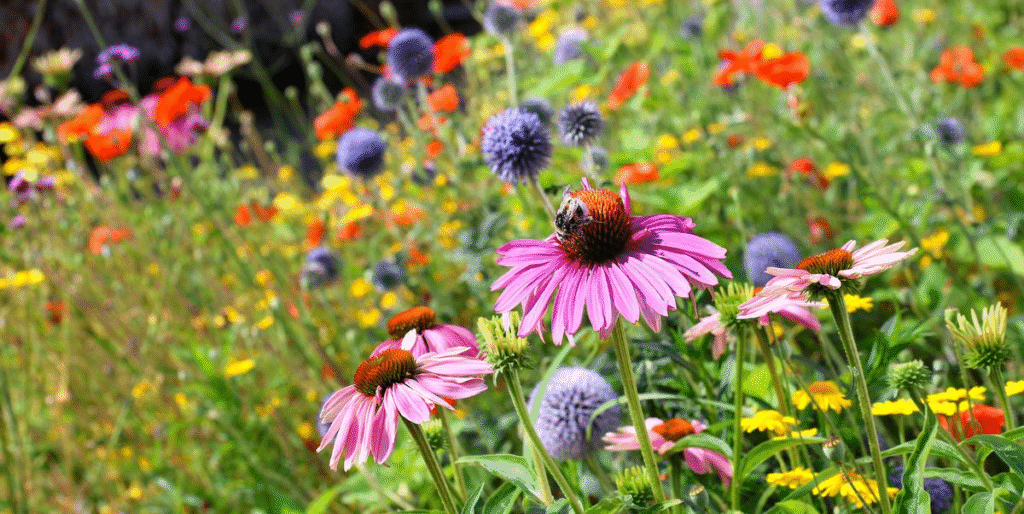
These reliable performers offer high success rates for novice wildflower gardeners across many regions (confirm suitability for your specific area):
Spring Bloomers:
- Wild Columbine (Aquilegia canadensis)
- Woodland Phlox (Phlox divaricata)
- Golden Alexanders (Zizia aurea)
Summer Bloomers:
- Purple Coneflower (Echinacea purpurea)
- Black-eyed Susan (Rudbeckia fulgida)
- Butterfly Weed (Asclepias tuberosa)
Fall Bloomers:
- New England Aster (Symphyotrichum novae-angliae)
- Aromatic Aster (Symphyotrichum oblongifolium)
- Goldenrod (Solidago spp.)
Structural Elements:
- Little Bluestem (Schizachyrium scoparium)
- Prairie Dropseed (Sporobolus heterolepis)
Planning Your Backyard Wildflower Garden
Successful wildflower gardens begin with careful planning that accounts for both the aesthetic vision and the ecological realities of your site.
Site Assessment Checklist
Before purchasing plants or seeds, thoroughly evaluate these critical site factors:
Sunlight Conditions:
- Track sun patterns throughout the day
- Note seasonal variations (tree leaf-out changing light conditions)
- Identify full sun (6+ hours), partial sun (4-6 hours), and shady areas (less than 4 hours)
- Consider reflective surfaces that may intensify heat and light
Soil Characteristics:
- Conduct basic soil tests for pH and major nutrients
- Assess soil texture (sandy, loamy, or clay)
- Check drainage by observing how water moves after rain
- Identify any compacted areas requiring remediation
Existing Vegetation:
- Document plants already thriving (indicating compatible conditions)
- Note problematic weeds requiring special attention
- Identify any existing native plants worth preserving
- Consider gradual conversion if replacing lawn to manage the project scope
Microclimates:
- Observe areas that are consistently warmer, cooler, wetter, or drier
- Note wind patterns and potential protection needs
- Identify frost pockets or heat islands
- Consider proximity to structures affecting temperature and moisture
Creating a Functional Plan
Transfer your site observations to a simple sketch that will guide implementation:
Basic Elements to Include:
- Garden boundaries and approximate dimensions
- Existing features remaining in place (trees, shrubs, hardscape)
- Circulation paths and access points
- Viewing areas from indoor and outdoor spaces
- Utility areas requiring access (meters, hydrants)
- Water sources for establishment phase
Plant Community Mapping:
- Designate areas for different plant communities based on conditions
- Plan taller species where they won’t block views of shorter plants
- Include notes on soil amendments needed for specific areas
- Mark locations for signature plants or focal points
- Indicate phases if implementing the garden over multiple seasons
Selecting Plants for Your Wildflower Garden
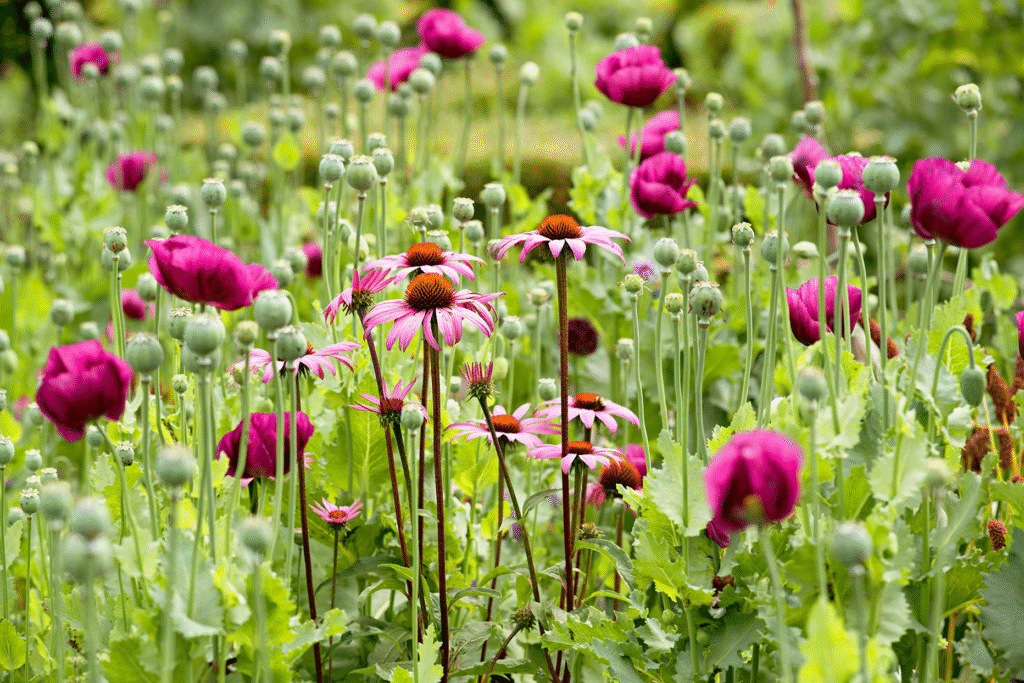
The heart of a successful wildflower garden lies in choosing the right plants for your specific conditions and aesthetic goals.
Regional Adaptation is Key
Focus primarily on wildflowers native to your region for these advantages:
- Evolutionary adaptation to local climate and soil conditions
- Established relationships with local pollinator species
- Resistance to regional pest and disease pressures
- Connection to local ecological networks
- Greater resilience to weather extremes
Finding Regionally Appropriate Plants:
- Consult with local native plant societies
- Visit native plant nurseries specializing in local ecotypes
- Research nearby natural areas with similar conditions
- Connect with local extension offices for science-based recommendations
- Observe successful plantings in neighboring properties
Creating Bloom Succession
Plan for continuous visual interest by selecting plants that flower in different seasons:
Early Season (Spring):
- Focus on spring ephemerals that bloom before tree canopy leafs out
- Include early nectar sources for emerging pollinators
- Select species with attractive foliage that persists after blooming
Mid-Season (Summer):
- Incorporate drought-tolerant species for summer resilience
- Include variety of flower shapes to support diverse pollinators
- Plan for visual peaks during prime outdoor usage months
Late Season (Fall):
- Select species that support migrating butterflies
- Include plants with ornamental seed heads for winter interest
- Consider fall foliage color as part of the design
Winter Interest:
- Select grasses and plants with sturdy stems that stand through winter
- Include species with persistent seed heads providing food for birds
- Consider evergreen groundcovers for winter structure
Plant Selection Strategies
Beyond bloom time, consider these factors when selecting wildflower species:
Functional Diversity:
- Include plants from multiple families (not just asters and sunflowers)
- Select various root structures (fibrous, taprooted) for soil health
- Incorporate nitrogen-fixing plants to improve soil naturally
- Choose plants supporting specific wildlife requirements (host plants)
Maintenance Considerations:
- Be cautious with aggressive spreaders in small gardens
- Include backbone species that maintain structure throughout seasons
- Balance shorter-lived showier species with longer-lived structural plants
- Select appropriate plant heights for specific locations
Preparing Your Site for Wildflowers
Proper site preparation is the most critical step for long-term success with wildflower gardens.
Removing Existing Vegetation
Before planting, you’ll need to eliminate competing plants, especially turf grass:
Sheet Mulching (No-Dig Method):
- Mow existing vegetation as short as possible
- Cover area with cardboard or several layers of newspaper, overlapping edges
- Wet thoroughly to initiate decomposition
- Cover with 3-4 inches of compost or leaf mulch
- Allow to decompose for 3-6 months before planting into the mulch
- Best for fall preparation before spring planting
Solarization (Chemical-Free Removal):
- Mow existing vegetation as short as possible
- Water area thoroughly
- Cover with clear plastic, securing edges tightly
- Leave in place for 4-8 weeks during warm weather
- Remove plastic and plant directly into cleared soil
- Most effective during summer months
Mechanical Removal:
- Use a sod cutter to remove turf in thin strips
- Extract persistent weed roots by hand
- Loosen compacted soil gently without disrupting soil structure
- Rake smooth and allow area to settle before planting
- Most immediate results but more physically demanding
Soil Preparation
Contrary to popular garden advice, most native wildflowers prefer:
- Lean Soil: Avoid excessive fertilization which can promote weed growth
- Minimal Disturbance: Limit tilling which brings dormant weed seeds to surface
- Appropriate pH: Most wildflowers prefer slightly acidic to neutral soil (5.5-7.0)
Amendment Guidelines:
- Only add organic matter if soil is extremely sandy or compacted clay
- Focus on top 2-3 inches rather than deep soil amendments
- Avoid nitrogen-rich fertilizers that encourage leafy growth over flowering
- Consider incorporating a thin layer of compost only in poor soils
Planting Methods for Backyard Wildflower Gardens
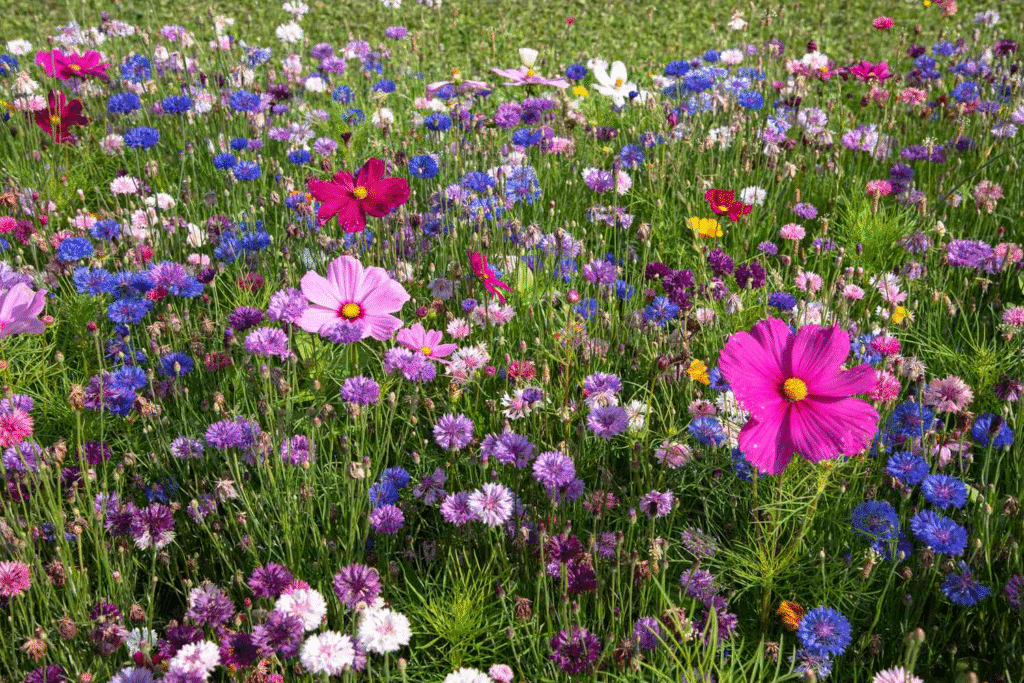
The planting approach you choose influences both initial appearance and long-term development of your wildflower garden.
Container-Grown Plants vs. Seeds
For backyard-scale wildflower gardens, consider these planting approaches:
Container-Grown Plants: Advantages
- Immediate visual impact
- Easier identification during establishment phase
- Quicker flowering (especially for perennials)
- Better success with difficult-to-germinate species
- More precise placement of specific species
Direct Seeding: Advantages
- More economical for larger areas
- More natural, random distribution patterns
- Better for species preferring no root disturbance
- Opportunity to establish larger quantities of plants
- More closely mimics natural establishment processes
Combination Approach (Recommended)
- Use container plants for anchor species and focal points
- Seed annual wildflowers for first-season color
- Add slow-developing perennials as container plants
- Seed between established plants for natural infill
- Emphasize container plants near edges and viewpoints
Planting Techniques for Success
Whether using seeds or plants, these techniques improve establishment rates:
For Container Plants:
- Plant during spring or fall for reduced transplant stress
- Dig holes just as deep as root balls but twice as wide
- Position plants at the same level they were growing in containers
- Water thoroughly after planting and maintain moisture for 4-6 weeks
- Apply light mulch around but not touching plant stems
For Direct Seeding:
- Mix seeds with sand or vermiculite for even distribution
- Divide seed mix and sow half in each direction for better coverage
- Press seeds firmly into soil surface without burying deeply
- Apply very light mulch layer (straw or shredded leaves)
- Maintain consistent moisture during germination period
- Consider phased seeding over multiple seasons
Maintaining Your Wildflower Garden
Once established, wildflower gardens require minimal but specific maintenance practices that differ from conventional gardening.
First-Year Care
The establishment year requires special attention:
- Watering: Provide consistent moisture (not soggy) for the first 4-8 weeks, then reduce gradually
- Weed Control: Remove competing vegetation before it establishes, focusing on aggressive non-natives
- Identification: Mark planting areas and learn to recognize wildflower seedlings versus weeds
- Supplemental Seeding: Add seeds to bare patches in appropriate planting windows
- Documentation: Photograph and note emerging patterns for future reference
Ongoing Maintenance Calendar
Follow this seasonal maintenance schedule for established wildflower gardens:
Late Winter:
- Leave standing seed heads and stems for winter wildlife
- Plan for spring additions or modifications
- Order seeds for spring seeding
Early Spring:
- Cut back previous year’s growth before new growth emerges
- Remove winter mulch from sensitive plants if applicable
- Control early-season weeds before they set seed
- Photograph emerging spring ephemerals
Late Spring:
- Identify and document early bloomers
- Monitor for problematic insect damage
- Remove aggressive spreaders if overcrowding occurs
- Apply light mulch to bare areas if needed
Summer:
- Provide supplemental water only during extreme drought
- Document peak bloom for future planning
- Collect seeds from early bloomers for redistribution
- Enjoy your garden with minimal intervention
Fall:
- Allow seed heads to form and disperse naturally
- Limit cutting back to selective areas for aesthetic preference
- Plant container-grown additions before first frost
- Apply light leaf mulch only if soil exposure is excessive
Sustainable Practices:
- Leave stems standing through winter for beneficial insect habitat
- Avoid chemical fertilizers and pesticides that disrupt ecosystem
- Limit irrigation to establishment phase and extreme drought
- Use on-site materials for mulch when needed (fallen leaves, small branches)
Troubleshooting Common Wildflower Garden Challenges
Even well-planned wildflower gardens face challenges. Here are solutions to common issues:
Weed Management
Distinguishing between desirable volunteers and problematic weeds:
- Identification Focus: Learn to recognize wildflower seedlings at early stages
- Prioritization: Target aggressive non-native species first
- Timing: Remove weeds before they set seed
- Technique: Hand-pull with minimal soil disturbance
- Mulching: Apply light, seed-free mulch to persistently bare areas
- Patience: Accept that some weed presence is natural in ecological gardens
Balancing Aggressive Spreaders
Some wildflowers may dominate without management:
- Strategic Removal: Thin over-abundant species after bloom
- Edge Definition: Create physical barriers around aggressive spreaders
- Competition: Introduce complementary species that can coexist
- Deadheading: Remove spent flowers before seed set on overly vigorous species
- Containment: Use buried root barriers for rhizomatous spreaders in small gardens
Addressing Bare Patches
If areas remain sparse after establishment:
- Soil Testing: Check for potential issues preventing growth
- Species Selection: Try different species better matched to microclimate
- Groundcover Introduction: Add lower-growing, spreading natives
- Patch Seeding: Target bare areas with appropriate seasonal seed mixes
- Mulch Management: Ensure mulch isn’t too thick preventing seed contact with soil
Celebrating Your Wildflower Garden Success
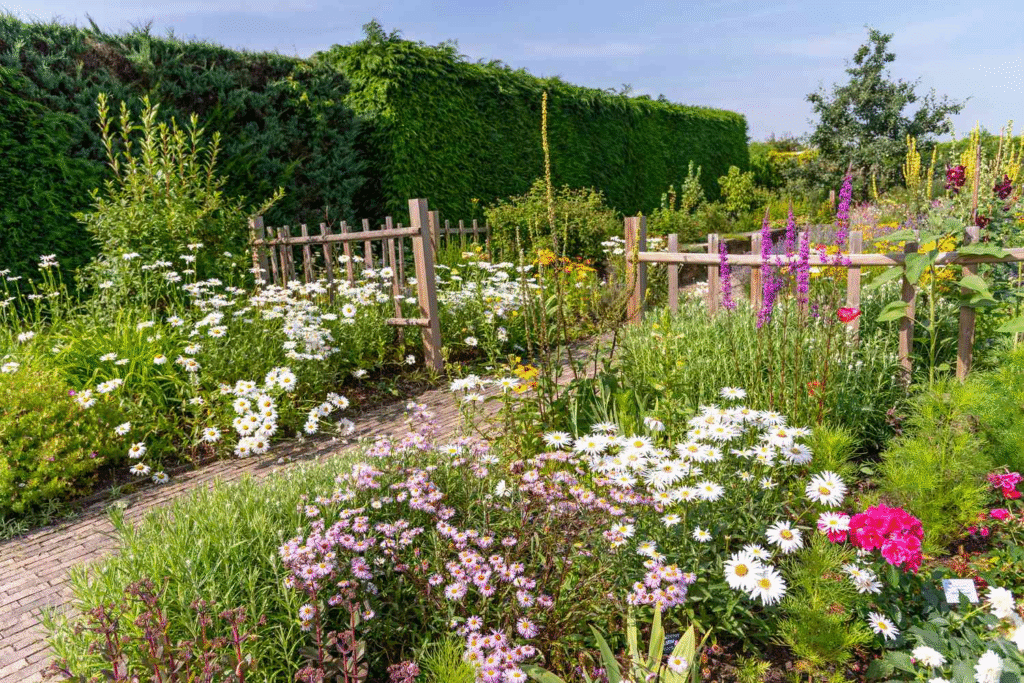
The true reward of creating a wildflower garden comes from observing and sharing its dynamic beauty:
Documenting and Sharing
Record your garden’s development to enhance appreciation:
- Photo Journals: Take monthly images from consistent vantage points
- Species Inventory: Maintain a running list of plants and wildlife observed
- Seasonal Highlights: Note peak bloom periods for future planning
- Community Connections: Share seeds and divisions with neighbors
- Educational Outreach: Consider garden tours to inspire others
The Evolving Ecosystem
Embrace the dynamic nature of wildflower gardens:
- Natural Succession: Welcome changes as plants find their preferred niches
- New Relationships: Observe developing connections between plants and wildlife
- Seasonal Rhythms: Appreciate different aspects of beauty throughout the year
- Personal Connection: Develop deeper understanding of local ecology through direct experience
- Ongoing Learning: Adjust management practices based on observations
Conclusion: The Living Legacy of Backyard Wildflower Gardens
Creating a wildflower garden in your backyard is more than a landscaping project—it’s an invitation to participate in ecological restoration at a personal scale. As your garden matures, it becomes not only a source of beauty and pleasure but also a vital habitat supporting local biodiversity in an increasingly fragmented landscape.
The most successful wildflower gardens balance human aesthetic desires with ecological function, creating spaces that delight the senses while nurturing the complex web of relationships between plants, pollinators, birds, and beneficial insects. Whether you start with a small corner of your yard or transform your entire landscape, each native plant you establish contributes to the broader effort to sustain and regenerate our shared environment.
As you embark on your wildflower gardening journey, remember that each garden reflects its unique place and steward. Your observations, adaptations, and care will shape a living system that connects you more deeply to the natural rhythms of your region—a living legacy that grows more beautiful and valuable with each passing season.
